SUBJECTS
GRADE
Show Results
Animal Question–and–Answer Reports
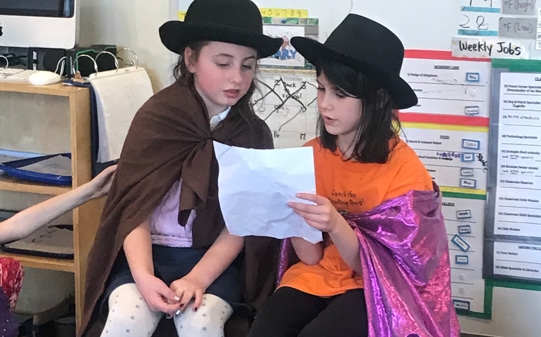
Lesson Summary
- Research an animal and write a report with a partner.
- Perform the report in costume, with one reporter asking questions and one animal giving answers.
Lesson Plan and Procedure
Lesson Key Facts
- Grade(s): 2, 3
- Subject(s): Drama, English Language Arts, Science
- Duration of lesson: 45 minutes
- Author(s): Haley Flanders
Note: This can be an ongoing project. Students do not all need to present their reports on the same day. Have at least one pair of students present, or you can present one report as an example. Make sure you have your materials and that the students have had exposure to research resources such as books, glossaries, indexes, and websites.
Warm-Up/Hook
Gather the class in a standing (or sitting) circle, with you in the circle as well.
Teacher: We are going to play the game “Yes, and . . .” This is an improvisation game, which means you will say whatever comes to your head, without too much planning. While we play, I encourage you to ask each other questions about animals. I will go first by asking a question to the person to my right such as, “Is that your monkey?” Then the person to my right must affirm my question by saying, “Yes, and . . . ,” and then adding to my question while staying on topic. For example, the person could say, “Yes, and my monkey’s name is Nell.” Then this person turns to the person on his or her right and asks an entirely new question to that person. It does not have to relate to the previous one. The process continues until everyone has asked and answered a question. It will end with me answering the last question.
Reflection
Teacher: In what ways was this game easy? In what ways was it hard? What does this game teach us? The game is designed to teach you to listen and respond, to accept the suggestions and questions offered by your peers, and to learn to answer them on topic. This game will help us with our activity today, writing and presenting animal question-and-answer reports in front of the class.
Introduction
Teacher: For your reports, you will be in pairs and will pretend to be on the news. Student 1 will play the role of the reporter and will interview student 2, who will play the role of an animal. The reporter will ask the animal five questions, and the animal will answer each question. Please avoid simple yes or no questions, silly or fanciful questions, and obvious questions to which we already know the answer. To make these reports more fun to present, you will each have the option of wearing one fabric and one hat. Student 2 could perhaps pick pieces that reflect the animal’s texture, size, and color. Student 1 can hold a marker to act as the microphone during the interview.
Instruction/Rehearsal
Divide the students into pairs. Hand each pair the handout with sample questions in the following categories: the animal’s name, anatomy/appearance, locomotion (how it moves), diet, habitat/range, adaptations, life cycle/reproduction, behavior, defense/offense, enemies, survival status, something special, and classification. Topics are not limited to this list. Go over the sheet in order to help them understand each category.
Give each pair a question-and-answer template (refer to image 2). Have the students put their names on the template, and let them decide which part they will be playing: reporter or animal (choose an animal). Provide plenty of resources: books, websites, magazines, videos, etc. Encourage the use of the index, key words, glossaries of books, and other research materials.
Teacher: One way to do research is to have a question in mind beforehand and then search the index for keywords or type the question in a search engine online. Other times, it is good to simply start reading and come up with a question after finding interesting facts.
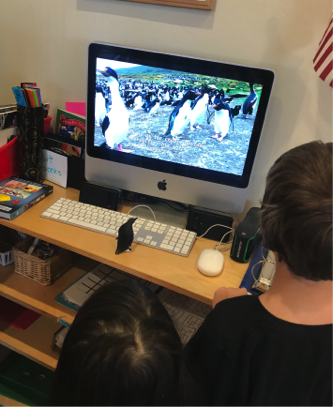 To make the report more of a reader’s theatre performance, have the children consider how each animal might walk and talk, if it could speak. Refer them to videos where they can watch their animals move and make noise. Also, have them watch clips of reporters and take note of the serious and rhythmic tone and pace at which the reporters speak, as well as the strong articulation (emphases of syllables) and clarity of speech that reporters must use. Have them watch interviews from talk shows or other types of question-and-answer sessions, so they can replicate the professionalism of the reporters and the way they raise their voices at the end of questions. Have those playing an animal take note of the ways people choose to answer questions: happy, excited, nervous, scared, mean, etc. How would this animal possibly react if being interviewed in real life? Does it like people?
To make the report more of a reader’s theatre performance, have the children consider how each animal might walk and talk, if it could speak. Refer them to videos where they can watch their animals move and make noise. Also, have them watch clips of reporters and take note of the serious and rhythmic tone and pace at which the reporters speak, as well as the strong articulation (emphases of syllables) and clarity of speech that reporters must use. Have them watch interviews from talk shows or other types of question-and-answer sessions, so they can replicate the professionalism of the reporters and the way they raise their voices at the end of questions. Have those playing an animal take note of the ways people choose to answer questions: happy, excited, nervous, scared, mean, etc. How would this animal possibly react if being interviewed in real life? Does it like people?
When their research is complete, have the students draw and color a picture of their animal on the back of the report.
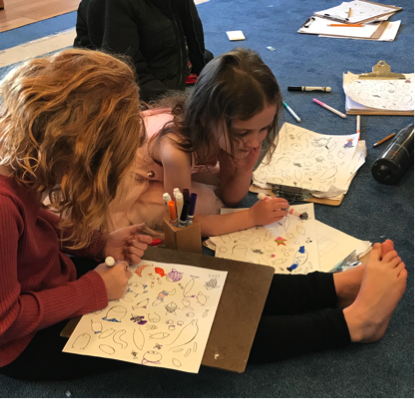 Teacher: Before you present, remember that this is a performance. Recall from the videos we watched how reporters and interviewees speak to one another. Now, I would like the audience to sit and be respectful of those presenting.
Teacher: Before you present, remember that this is a performance. Recall from the videos we watched how reporters and interviewees speak to one another. Now, I would like the audience to sit and be respectful of those presenting.
One at a time, have each pair come to the front of the room, sit in chairs facing the rest of the class, and give their report, holding their scripts and wearing their costumes. The reporter can introduce the animal, and the animal can enter the classroom at that time if they want to make a dramatic entrance onto the “stage.” When they are finished, have the students clap and record facts that they learned in their science journal. Then recollect the list of sample questions to be used again throughout the year. Make copies of the reports so that each partner has one to keep. Perhaps make a copy of each report and assemble a book for your classroom.
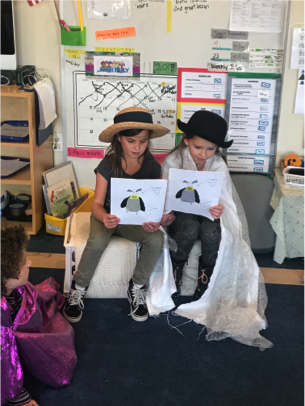
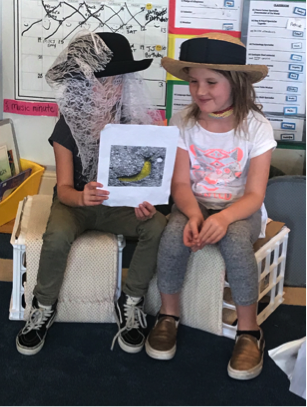
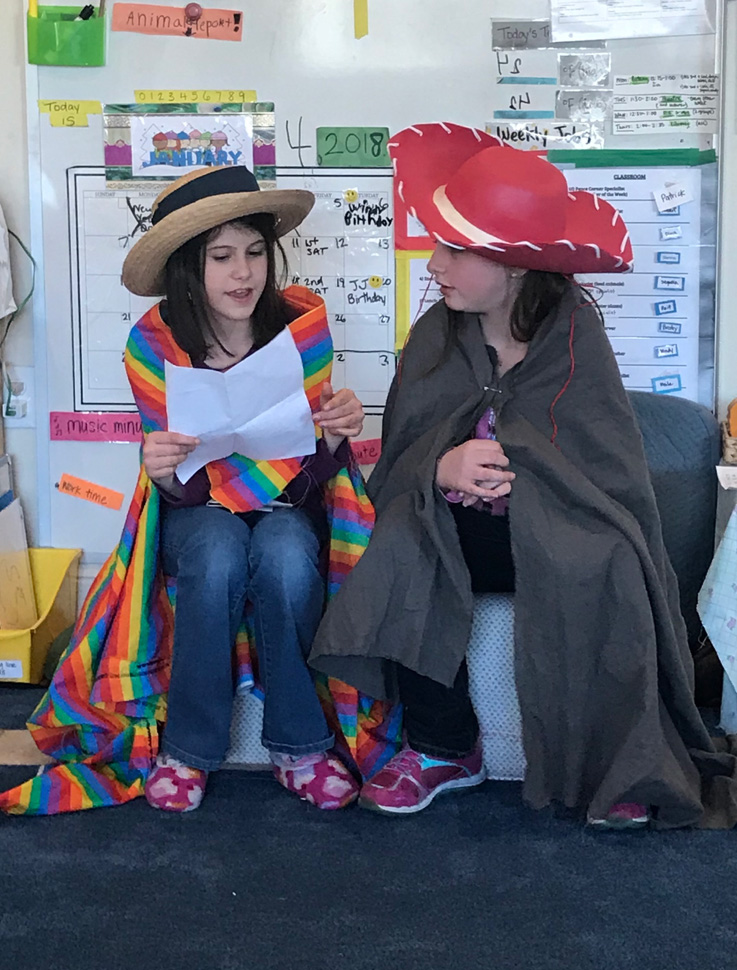
Conclusion
Teacher: What did you like about this project? What was easy about it? What was difficult about it? What did you learn? How did you choose your animals? What animal(s) would you like to research and report on next time?
Have each student record in their science journal something they learned about an animal from another report; as the school year goes on, use this template and activity in multiple different cultural topics across the curriculum. The students do not all have to present on one day, either. This can be an ongoing project.
Learning Objectives
- Develop imagination and create costumes.
- Define roles and work in a group.
- Communicate character through physicality and voice.
- Perform for classmates or another audience.
- Demonstrate understanding of key details in a text.
- Read orally with appropriate expression and accuracy.
- Demonstrate understanding of English grammar when writing and speaking.
- Study animals and how their features affect their survival.
- Identify basic needs of living things.
Utah State Board of Education Standards
This lesson can be used to meet standards in many grades and subject areas. We will highlight one grade’s standards to give an example of application.
Grade 2 Science with Engineering Education (SEEd)
Strand 2.2: LIVING THINGS AND THEIR HABITATS
Living things (plants and animals, including humans) need water, air, and resources from the land to survive and live in habitats that provide these necessities. The physical characteristics of plants and animals reflect the habitat in which they live. Animals also have modified behaviors that help them survive, grow, and meet their needs. Humans sometimes mimic plant and animal adaptations to survive in their environment.
Grade 2 English Language Arts
- Standard 2.R.4: Read grade-level text with accuracy and fluency to support comprehension. (RL & RI)
- Standard 2.R.5: Ask and answer questions such as who, what, where, when, why, and how to demonstrate understanding of key details in a text. (RL & RI)
- Writing (2.W): Students will learn to write for a variety of tasks, purposes, and audiences using appropriate grammar/conventions, syntax, and style.
Grade 2 Drama
- Standard 2.T.CR.4: Define roles and responsibilities and participate in group decision making.
- Standard 2.T.CR.5: Create character through physical movement, gesture, sound and/or speech and facial expression.
- Standard 2.T.P.2: Demonstrate the ability to work effectively alone and cooperatively, with a partner or in an ensemble.
- Standard 2.T.P.7: Select materials to be use for scenery, properties, costumes, lighting, and sound effects for informal classroom presentations.
- Standard 2.T.P.9: Share dramatic play and guided drama experiences within the classroom or with invited guests.
Equipment and Materials Needed
- Pencils
- A marker to resemble a microphone
- Science journals for each student
- Animal books and websites for research (listed under “Additional Resources”)
- Collection of hats (or paper, scissors, and tape to make hats)
- Collection of fabrics and fasteners (safety pins)
- "Animal Question-and-Answer Reports" PDF template with sample questions (one per pair)
Additional Resources
Resources helpful for student research:
- National Geographic for Kids
- Animal Planet
- National Geographic Kids
- Wild Kratts, Kratt Brothers Company, 2015
- Discovery Kids Readers, Parragon Books Inc.
- Spelman, Lucy H. National Geographic Animal Encyclopedia: 2,500 Animals with Photos, Maps, and More! National Geographic Children’s Books, 2012.
Image References
Images 1–7: Haley Flanders.

www.education.byu.edu/arts/lessons
 Download
Download